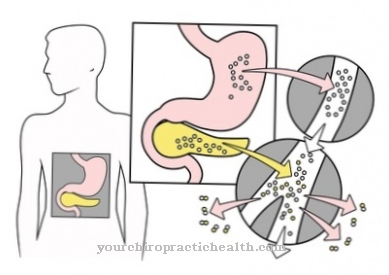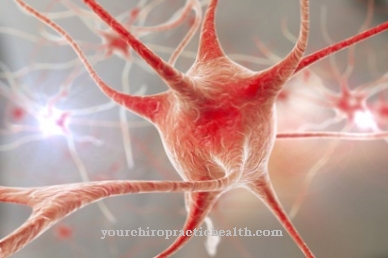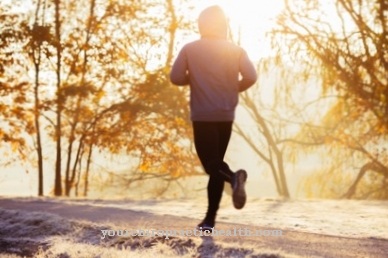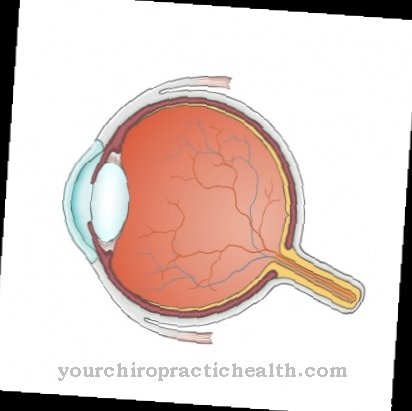Go means the movement of humans with the help of their legs and feet. Walking is a complex task in which numerous muscles are active and interact. We move from the spot and keep our balance at the same time.
What is the walking

Walking sets a number of muscles, bones and tendons in motion. The body is in contact with the ground in every phase of the movement cycle. On average, people walk 1.4 m per second.
In the starting position, the person stands with both feet on the floor, lifts one leg and alternately places it in front of the other. Walking is an automatism, i.e. a behavior triggered independently by the central nervous system. The flapping of wings in birds or the movements of the fins in fish are similar automatisms.
Our ancestors learned to walk upright about five to six million years ago. About three and a half million years ago there was at least one other human species that was equipped with a special foot shape for life between the ground and trees. The adaptation of the musculoskeletal system of this species has long been beneficial and is more reminiscent of the gait of gorillas, as archaeological finds show.
At first glance, walking upright seems to be more of an obstacle than a further development for humans, because compared to other mammals it had disadvantages in terms of speed and jumping power. Nevertheless, walking upright is the basis of today's human existence. Although the mode of locomotion is relatively unstable and slow compared to other gaits, it requires less energy expenditure for locomotion with the same body weight.
Function & task
The upright gait enabled people to hold out longer than before, even when there was little food available.The energy efficiency also allowed him to regulate body temperature through sweating and to hunt in a novel way. Thanks to the upright gait, humans were now able to pursue their prey for a long time, because no animal on land can cover such distances in one day as humans. The energy of other animals would soon be depleted or they would be overheated.
The upright gait is often seen as a decisive feature in the development of today's human being. In fact, this mode of locomotion is rather clumsy. The path from the trees to the ground slowed the human species, but the climate forced them to find new sources of food. In order to catch fish, for example, humans had to learn to wade through water.
The development towards an upright gait brought about significant changes in the skeleton. The foot as a gripping tool has now become an anatomical structure with all toes pointing forward. The spine was given a double S-shape so that it could carry the body and not tilt backwards. The pelvis was also wider to hold all the entrails.
Walking is the most original and most natural form of human locomotion and, from the point of view of evolutionary biology, a very efficient whole-body training. For thousands of years people have covered long distances on foot. But standing and walking correctly is obviously an art that we are less and less able to master.
Today, modern man spends almost seven hours sitting, plus an average of eight hours of sleep. The majority of the day takes place without physical exercise. However, walking is essential for health and trains the whole body. Those who walk quickly take in up to ten times more oxygen than when they are sitting or lying down. Walking works almost by itself, as automatically as breathing.
You can find your medication here
➔ Medicines for balance disorders and dizzinessIllnesses & ailments
For anatomical reasons, the upright posture leads to stress in the lower body area with increasing age. There are more and more herniated discs, flat feet and flat feet, varicose veins and hip arthrosis.
The negative consequences are increased considerably by the lack of exercise in modern industrial societies. Thanks to practical means of transport, people walk less and less, instead sit too much and gradually forget how to walk healthily. This not only has a significant impact on his skeleton, but on all organs. Even those who run 10 minutes more a day are doing crucial things for their health. Even a simple walk has positive effects.
Walking is also excellent for reducing stress. The energy provided in the stressful situation is not automatically reduced, so the body needs a balance. Activity creates this balance. Even short movements add up over the day and strengthen the heart, circulation, metabolism and breathing.
Walking is also a very relaxed way of getting around. Nevertheless, taking a daily walk lowers the risk of more than 20 diseases. Already around 180 minutes of exercise a week to protect against type II diabetes, obesity, high blood pressure, osteoporosis, depression and several types of cancer, as a study by the University of East Anglia near London showed.
Walking is the ideal sport for seniors because it is hardly strenuous and does not cost much to overcome. If you walk briskly, you can use as much energy as a slow runner. Going for a walk also trains the sense of balance and is a very good fall prophylaxis. A walker must also pay attention to pedestrians, oncoming traffic and influences from the environment. Walking trains the mind as well as the body and can even prevent dementia.



























